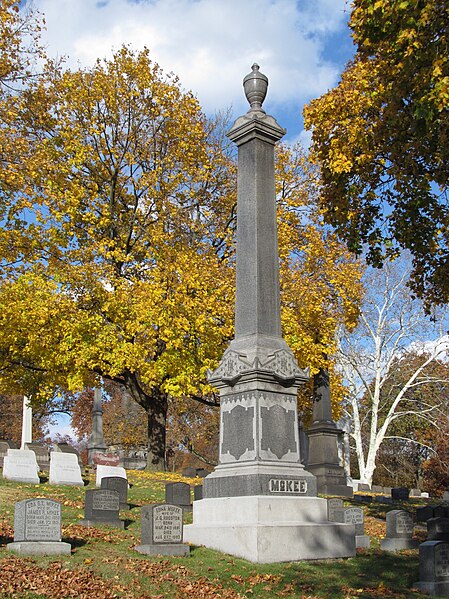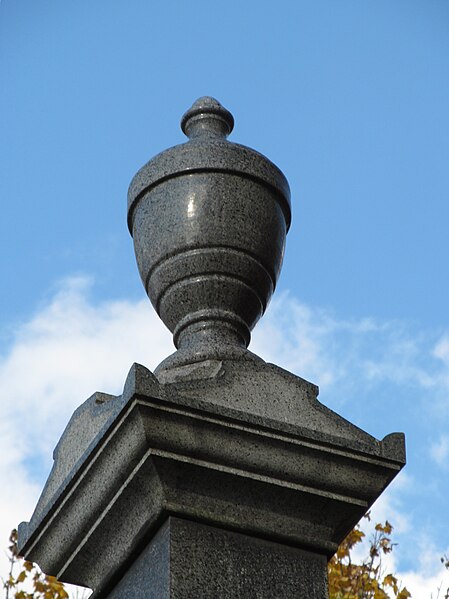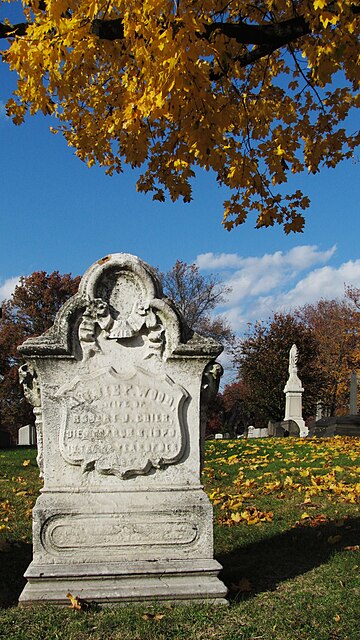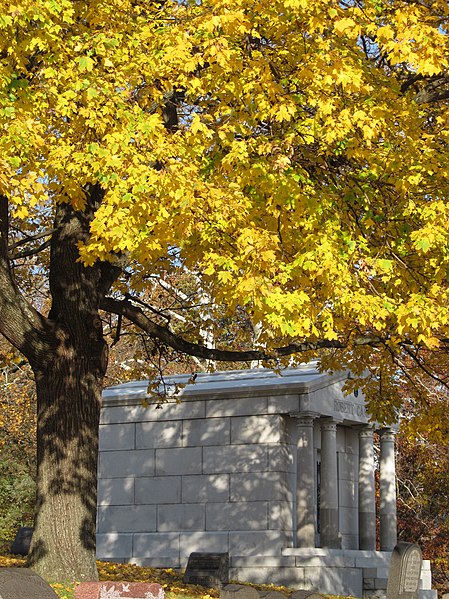
A tall shaft topped by an urn. The very Victorian design includes elaborate monograms and ample space for inscriptions, but no inscriptions were ever engraved. Instead, the McKees have individual headstones around the monument. Eleanor McKee died in 1877, and that may be the date of the monument as well; but from the style old Pa Pitt might guess that it is later, perhaps from 1892, when Eleanor’s husband John, the family patriarch, was buried. They had two children who died before either of them. All the McKees were buried with sentimentally illiterate rhymed epitaphs. The worst is for Samuel Sterrett McKee, who was born in 1861 and died in 1868:
CEASE DEAR PARENTS CEASE THY WEEPING
O’RE THE GRAVE WHERE I AM SLEEPING
FOR E’RE I LEFT MY HOME BELOW,
THE ANGELS WERE BECKONING ME TO GO.
Father Pitt counts two bad spellings and one grammatical error; he has given up the punctuation for lost.











